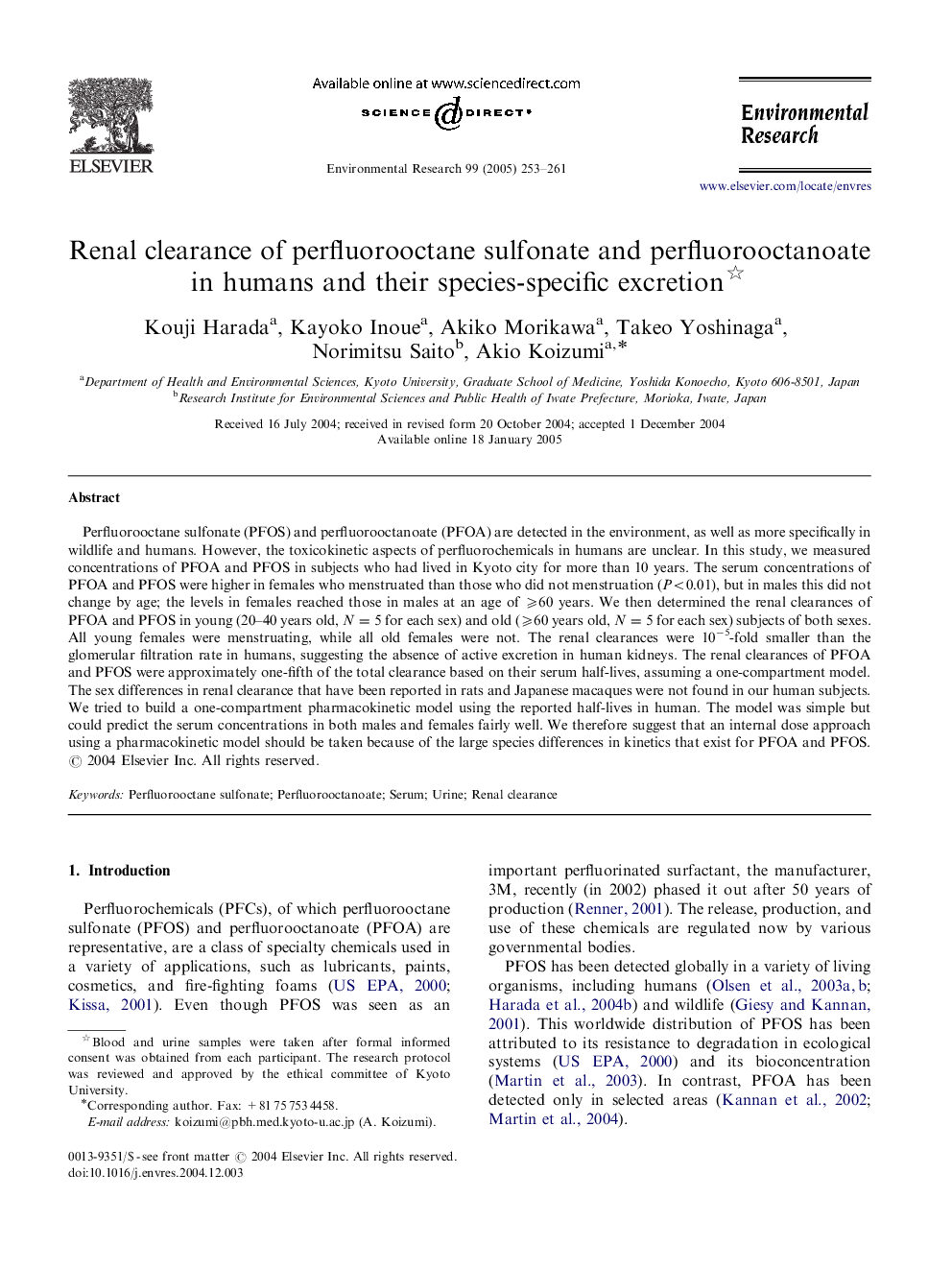| Article ID | Journal | Published Year | Pages | File Type |
|---|---|---|---|---|
| 9464713 | Environmental Research | 2005 | 9 Pages |
Abstract
Perfluorooctane sulfonate (PFOS) and perfluorooctanoate (PFOA) are detected in the environment, as well as more specifically in wildlife and humans. However, the toxicokinetic aspects of perfluorochemicals in humans are unclear. In this study, we measured concentrations of PFOA and PFOS in subjects who had lived in Kyoto city for more than 10 years. The serum concentrations of PFOA and PFOS were higher in females who menstruated than those who did not menstruation (P<0.01), but in males this did not change by age; the levels in females reached those in males at an age of ⩾60 years. We then determined the renal clearances of PFOA and PFOS in young (20-40 years old, N=5 for each sex) and old (⩾60 years old, N=5 for each sex) subjects of both sexes. All young females were menstruating, while all old females were not. The renal clearances were 10â5-fold smaller than the glomerular filtration rate in humans, suggesting the absence of active excretion in human kidneys. The renal clearances of PFOA and PFOS were approximately one-fifth of the total clearance based on their serum half-lives, assuming a one-compartment model. The sex differences in renal clearance that have been reported in rats and Japanese macaques were not found in our human subjects. We tried to build a one-compartment pharmacokinetic model using the reported half-lives in human. The model was simple but could predict the serum concentrations in both males and females fairly well. We therefore suggest that an internal dose approach using a pharmacokinetic model should be taken because of the large species differences in kinetics that exist for PFOA and PFOS.
Related Topics
Life Sciences
Environmental Science
Health, Toxicology and Mutagenesis
Authors
Kouji Harada, Kayoko Inoue, Akiko Morikawa, Takeo Yoshinaga, Norimitsu Saito, Akio Koizumi,
